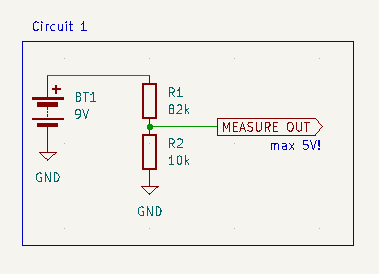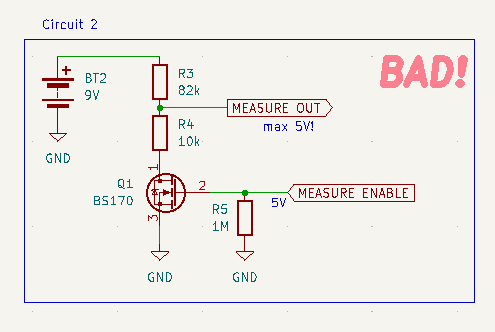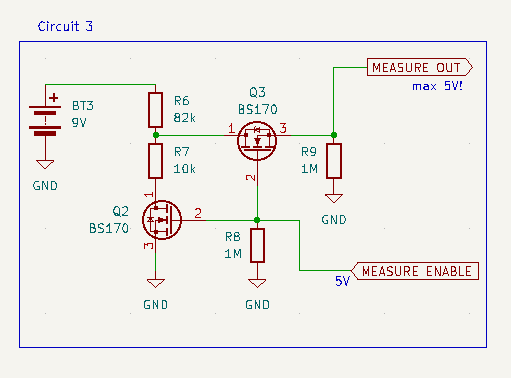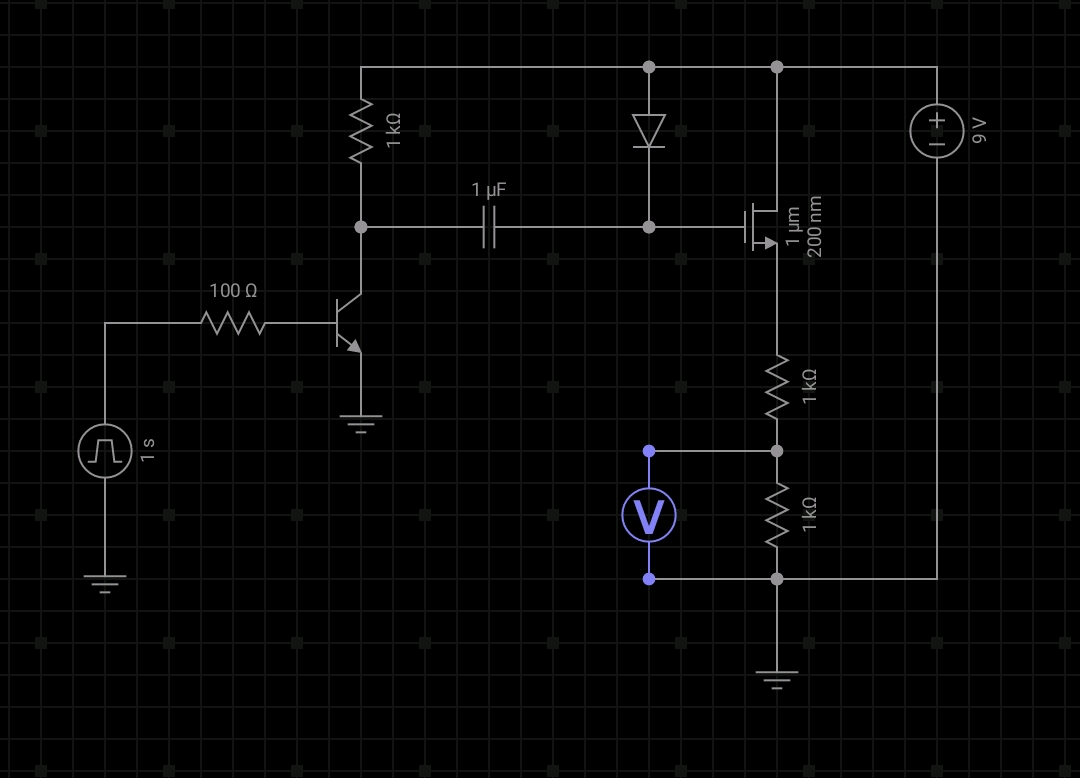I am powering a 5V microcontroller (arduino clone, atmega328p) using a 9V block and a buck converter. Now I want to let the microcontroller occasionally measure the battery voltage, so I can get an idea of how full it is.
My first idea was to use a simple voltage divider:

I’ve chosen the resistor values so that:
- the voltage at the measure output is
< 1.1V, to be able to use the 1.1V internal reference of the atmega’s ADC R1 || R2 < 10kΩ, since the atmega datasheet says “The ADC is optimized for analog signals with an output impedance of approximately 10 kΩ or less”
This is great and all, but what bothers me is that this circuit will constantly draw ~100µA from the battery.
So, my next thought was to add a mosfet to the divider, to switch it on only while measuring:

This is obviously bad, because now when the mosfet is off, the ADC input sees the whole battery voltage.
To address that issue, I’ve added a second mosfet into the measure path:

This works, and it does not draw any current, except while measuring.
However, it’s quite a few parts. So I’m curious if anyone has an idea how to do this with just a single mosfet. It seems to me like it should be possible, but I haven’t figured out how.
Oh, and if I’m doing something stupid here, please tell me :)
increase the resistors by a factor of 100 or so and add a very small cap across the lower one. The cap inside the ADC is absolutely tiny, pF at best. So a 100nF cap would easily do the trick and supply the voltage as required.
You could use a single MOSFET on the high side of the divider and use a cap + diode to boost the voltage and fully turn on the FET:

My gate driver is fairly crude but you could probably make something a bit better with a PNP transistor and either pull it down or leave it floating, or instead use a szaiklai pair
Could you do similar to diagram 2, but instead of an N-FET use a P-FET between the battery and first resistor in the potential divider?
Add a gate pull up resistor to source to ensure the FET is off by default, have the micro pull the gate down to take a measurement. You’ll probably need to add another resistor on the control pin to 0V to limit the voltage there also, but those two can be much much higher values to really limit current. Or use a zener/TVS diode instead of second resistor to clamp the voltage instead of dividing (more robust).Switch it with an NFET
The micro will see 0V or divided/clamped battery voltage on the measurement pin.
You could probably increase the 82K and 10K resistors to be much bigger (by a factor of 10x or maybe even 100x). Lookup the input impedance for the ADC of your model of ATmega, as long as it’s >10x the size of your resistors then your circuit will probably be accurate enough.
A couple more things to keep in mind:
- a fresh alkaline 9V battery is actually 9.6V or more, not 9V.
- 9V battery voltages droop noticeably when under load because of their high internal resistance. Make sure to measure under the same conditions.
You could probably increase the 82K and 10K resistors to be much bigger
That’s what I thought initially, but this stackoverflow post dissuaded me. The argument there is that the measurement will be wrong, if the input current is not enough to charge the internal cap within the measurement period. But I’ve done some testing now, and measurements done with 820k and 100k agree well with what my voltmeter measures, so I’ll go with this solution!
a fresh alkaline 9V battery is actually 9.6V or more, not 9V.
Indeed!
9.6V * 10k/92k = 1.04Vis still below 1.1V, so I should be fine in this case :)9V battery voltages droop noticeably when under load because of their high internal resistance. Make sure to measure under the same conditions.
This is a good point!
My firmware will be pretty monotonic though, basically:
- wake up
- measure battery
- measure some other sensors (the actual task of the device)
- turn on a transceiver, send all the measurements (including battery voltage)
- turn off transceiver & go to sleep
So, the load should be always the same at step (2).

